from https://ift.tt/2H7yn3g
from https://ift.tt/2H7yn3g

Astronomers said on April 2, 2018, that they used the Hubble Space Telescope to find the most distant star yet. This star is at least 100 times farther away than the next individual star ever seen, except for supernova explosions. Normally, when we talk about objects at this very great distance – in this case, seen at a time only 4.4 billion years after the Big Bang – we’re talking about supernova explosions, or other very, very bright objects or events in the universe, perhaps galaxies containing of billions of stars, or galaxy clusters, or energetic processes going on within galaxies. But this discovery is of a single star. It’s a hot blue star – called Lensed Star 1, or LS1, by astronomers – whose light was magnified some 2,000 times via a technique called gravitational microlensing. The scientists said in a statement that the discovery provides:
… new insight into the formation and evolution of stars in the early universe, the constituents of galaxy clusters and also on the nature of dark matter.
As so often happens in astronomy, the astronomers were looking at something else – a supernova explosion in the galaxy cluster MACS J1149.5-223 – when they found this very distant star in April 2016. They happened to spot the hot blue star – brightened due to magnification by the lensing technique – in the same galaxy that hosted the supernova.
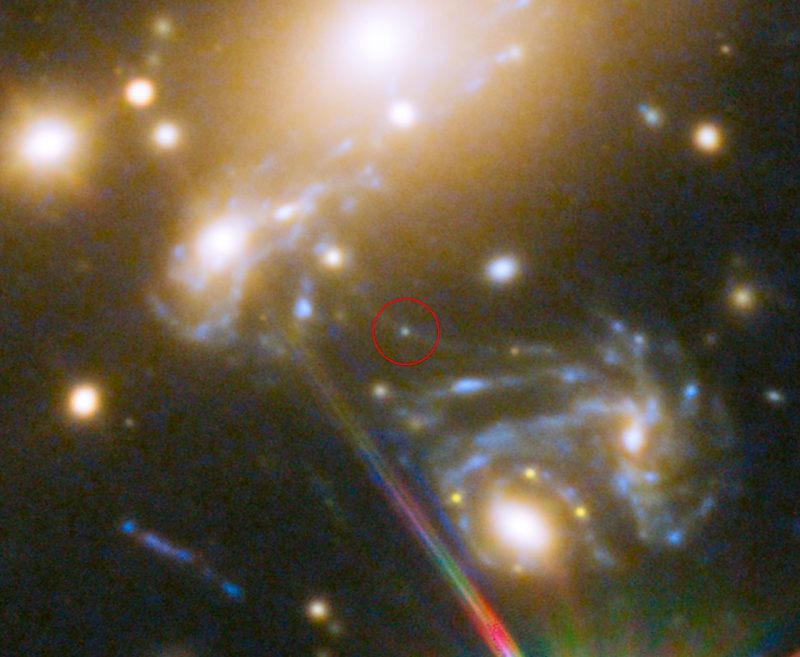
View larger. | This image shows the the distant galaxy cluster MACS J1149.5+223. After being magnified some 2,000 times via gravitational microlensing, the star LS1 appeared within a galaxy in this cluster. Image via Hubble Space Telescope.
Patrick Kelly of the University of Minnesota, Jose Diego of Instituto de Física de Cantabria in Spain, and Steven Rodney of the University of South Carolina led the discovery team. Their statement explained:
The light from LS1 was magnified not only by the huge total mass of the galaxy cluster, but also by another compact object of about three times the mass of the sun within the galaxy cluster itself. This effect is known as gravitational microlensing …
The discovery of LS1 allows [astronomers] to gather new insights into the constituents of the galaxy cluster. They know that the microlensing was caused by either a star, a neutron star, or a stellar-mass black hole.
LS1 therefore allows astronomers to study neutron stars and black holes, which are otherwise invisible, and they can estimate how many of these dark objects exist within this galaxy cluster.
What’s more, the star is enabling astronomers to gain insights about dark matter, a mysterious unseen substance thought to constitute a substantial fraction of the total matter in our universe. Kelly said:
If dark matter is at least partially made up of comparatively low-mass black holes, as it was recently proposed, we should be able to see this in the light curve of LS1.
So far, these astronomers said, their observations don’t favor the possibility that a high fraction of dark matter is made of low-mass black holes. But they said they’re looking forward to using the gravitational microlensing technique to probe for more individual stars in the distant, and young, universe.
Read more: Hubble uses cosmic lens to discover most distant star ever observed
Bottom line: Lensed Star 1, or LS1, is an individual star seen when the universe was perhaps only 30 percent of its present age. It’s at least 100 times farther away than the next individual star seen, except for supernova explosions.

Astronomers said on April 2, 2018, that they used the Hubble Space Telescope to find the most distant star yet. This star is at least 100 times farther away than the next individual star ever seen, except for supernova explosions. Normally, when we talk about objects at this very great distance – in this case, seen at a time only 4.4 billion years after the Big Bang – we’re talking about supernova explosions, or other very, very bright objects or events in the universe, perhaps galaxies containing of billions of stars, or galaxy clusters, or energetic processes going on within galaxies. But this discovery is of a single star. It’s a hot blue star – called Lensed Star 1, or LS1, by astronomers – whose light was magnified some 2,000 times via a technique called gravitational microlensing. The scientists said in a statement that the discovery provides:
… new insight into the formation and evolution of stars in the early universe, the constituents of galaxy clusters and also on the nature of dark matter.
As so often happens in astronomy, the astronomers were looking at something else – a supernova explosion in the galaxy cluster MACS J1149.5-223 – when they found this very distant star in April 2016. They happened to spot the hot blue star – brightened due to magnification by the lensing technique – in the same galaxy that hosted the supernova.

View larger. | This image shows the the distant galaxy cluster MACS J1149.5+223. After being magnified some 2,000 times via gravitational microlensing, the star LS1 appeared within a galaxy in this cluster. Image via Hubble Space Telescope.
Patrick Kelly of the University of Minnesota, Jose Diego of Instituto de Física de Cantabria in Spain, and Steven Rodney of the University of South Carolina led the discovery team. Their statement explained:
The light from LS1 was magnified not only by the huge total mass of the galaxy cluster, but also by another compact object of about three times the mass of the sun within the galaxy cluster itself. This effect is known as gravitational microlensing …
The discovery of LS1 allows [astronomers] to gather new insights into the constituents of the galaxy cluster. They know that the microlensing was caused by either a star, a neutron star, or a stellar-mass black hole.
LS1 therefore allows astronomers to study neutron stars and black holes, which are otherwise invisible, and they can estimate how many of these dark objects exist within this galaxy cluster.
What’s more, the star is enabling astronomers to gain insights about dark matter, a mysterious unseen substance thought to constitute a substantial fraction of the total matter in our universe. Kelly said:
If dark matter is at least partially made up of comparatively low-mass black holes, as it was recently proposed, we should be able to see this in the light curve of LS1.
So far, these astronomers said, their observations don’t favor the possibility that a high fraction of dark matter is made of low-mass black holes. But they said they’re looking forward to using the gravitational microlensing technique to probe for more individual stars in the distant, and young, universe.
Read more: Hubble uses cosmic lens to discover most distant star ever observed
Bottom line: Lensed Star 1, or LS1, is an individual star seen when the universe was perhaps only 30 percent of its present age. It’s at least 100 times farther away than the next individual star seen, except for supernova explosions.


Image via The Wisdom of the Wurzels.
Although blackbirds live longer in cities than in forests, telomeres – the repetitive stretches of DNA at the ends of the chromosomes – show that these city birds have a much poorer health status than their rural cousins. That’s according to a new study published March 21, 2018, in the peer-reviewed journal Biology Letters.
Blackbirds, a common sight in city gardens, have adapted well to an urban environment. But, said study author Juan Diego Ibáñez-Álamo:
…they also live in their original forest areas, which makes them ideal candidates for a study of the effect of city life on health.
Ibáñez-Álamo is working on a project studying the health effects of city life on birds at the Groningen Institute for Evolutionary Life Sciences in the Netherlands. Ibáñez-Álamo said the best way to study the relative health of city and rural birds is to compare telomere length. He explained why:
There are many indicators of health, like the presence of parasites or the immune response, but these will vary over time. The only truly unambiguous marker of health is the length of the telomeres, DNA structures that form a kind of cap at the end of the chromosomes and protect the DNA molecule from deterioration, just like the plastic caps on shoelaces.
During aging, the telomeres become shorter. But all kinds of stress will accelerate this shortening.

Image via Round Table.
The researchers obtained blood samples from blackbirds in five European cities and the adjacent rural areas to analyze telomere length. Ibáñez-Álamo also checked the plumage of the birds to assess their age. He said in a statement:
From the molting pattern, you can distinguish yearlings from older birds. So we were able to estimate the proportion of older birds in the populations.

Image via TrekNature.
The measurements showed that the telomeres of city yearlings were substantially shorter than those of rural yearlings. The difference was even greater in older birds. The city birds therefore showed signs of premature aging, meaning their health status was poor compared to the rural blackbirds. But, paradoxically, the proportion of older birds was higher in the cities. Ibáñez-Álamo said:
This means that mortality is lower in the cities, so the advantages of city life compensate for the negative health effects.
But as for why this is the case … the researchers are unsure, but part of the explanation could be that there is less predation or more food in cities.
Bottom line: A new study suggests that blackbirds live longer in cities than in rural environments, although their health is poorer.
Read more from University of Groningen


Image via The Wisdom of the Wurzels.
Although blackbirds live longer in cities than in forests, telomeres – the repetitive stretches of DNA at the ends of the chromosomes – show that these city birds have a much poorer health status than their rural cousins. That’s according to a new study published March 21, 2018, in the peer-reviewed journal Biology Letters.
Blackbirds, a common sight in city gardens, have adapted well to an urban environment. But, said study author Juan Diego Ibáñez-Álamo:
…they also live in their original forest areas, which makes them ideal candidates for a study of the effect of city life on health.
Ibáñez-Álamo is working on a project studying the health effects of city life on birds at the Groningen Institute for Evolutionary Life Sciences in the Netherlands. Ibáñez-Álamo said the best way to study the relative health of city and rural birds is to compare telomere length. He explained why:
There are many indicators of health, like the presence of parasites or the immune response, but these will vary over time. The only truly unambiguous marker of health is the length of the telomeres, DNA structures that form a kind of cap at the end of the chromosomes and protect the DNA molecule from deterioration, just like the plastic caps on shoelaces.
During aging, the telomeres become shorter. But all kinds of stress will accelerate this shortening.

Image via Round Table.
The researchers obtained blood samples from blackbirds in five European cities and the adjacent rural areas to analyze telomere length. Ibáñez-Álamo also checked the plumage of the birds to assess their age. He said in a statement:
From the molting pattern, you can distinguish yearlings from older birds. So we were able to estimate the proportion of older birds in the populations.

Image via TrekNature.
The measurements showed that the telomeres of city yearlings were substantially shorter than those of rural yearlings. The difference was even greater in older birds. The city birds therefore showed signs of premature aging, meaning their health status was poor compared to the rural blackbirds. But, paradoxically, the proportion of older birds was higher in the cities. Ibáñez-Álamo said:
This means that mortality is lower in the cities, so the advantages of city life compensate for the negative health effects.
But as for why this is the case … the researchers are unsure, but part of the explanation could be that there is less predation or more food in cities.
Bottom line: A new study suggests that blackbirds live longer in cities than in rural environments, although their health is poorer.
Read more from University of Groningen

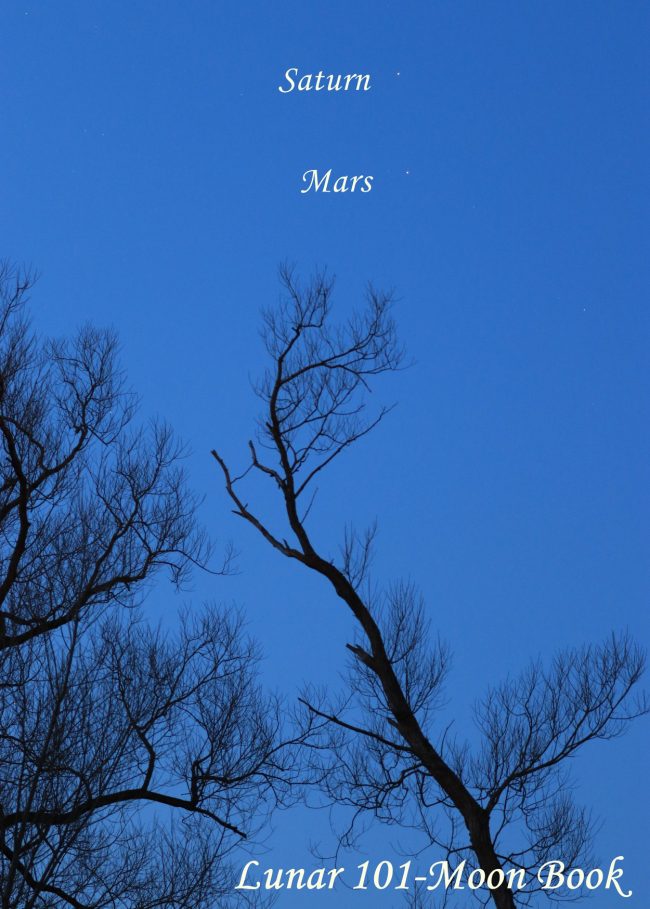
Saturn and Mars on the day of their conjunction – April 2, 2018 – via Steven A. Sweet in Toronto. Visit Steven’s Facebook page, Lunar101-MoonBook.

Saturn (left) and Mars are the 2 bright objects in this photo by Annie Lewis, taken April 2, 2018 – the morning of their conjunction – near Madrid, Spain. Saturn and Mars will remain in the same binocular field all week.

Victor C. Rogus in Arcadia, Florida also caught the planets on the morning of April 2, 2018. At conjunction, they were just 1.3 degrees apart, about a finger’s width held at arm’s length.

Mark your calendar for the morning of April 7, 2018, when the waning moon will sweep past Mars and Saturn. From North America, you have a good chance of viewing all 3 worlds – the moon, Mars and Saturn – in a single binocular field. Read more.
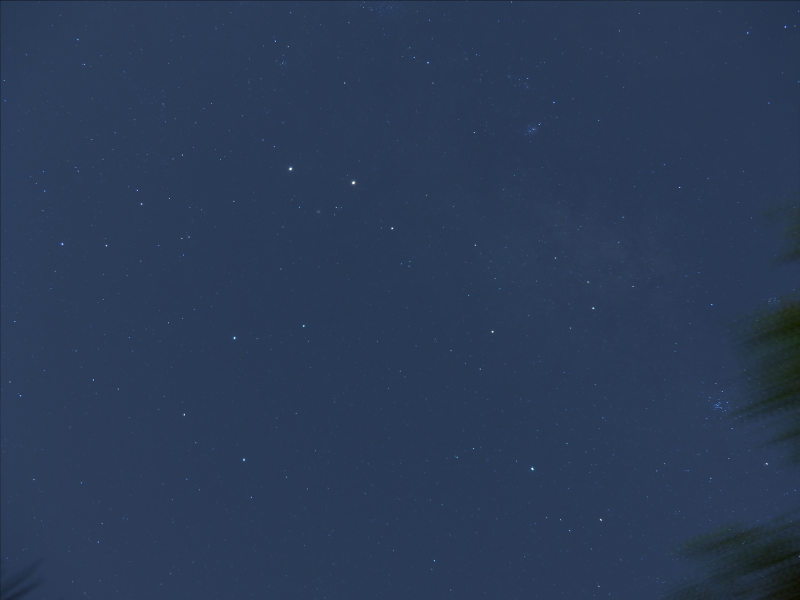
Saturn and Mars above the Teapot on March 30, 2018, via Patricio Leon in Santiago, Chile. He wrote on March 30: “The planets are gathering towards their close encounter on Monday.”
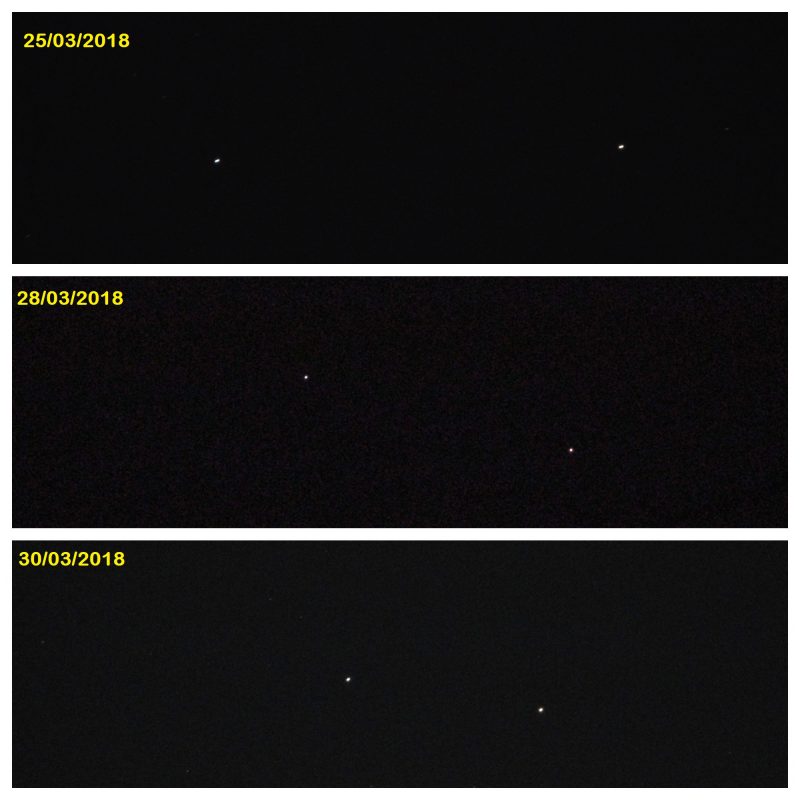
Planets Saturn (left) and Mars over 3 different days in March 2018, as seen by Shobhit Tiwari in Kanpur, India. He wrote on March 30: “Getting closer day by day … “
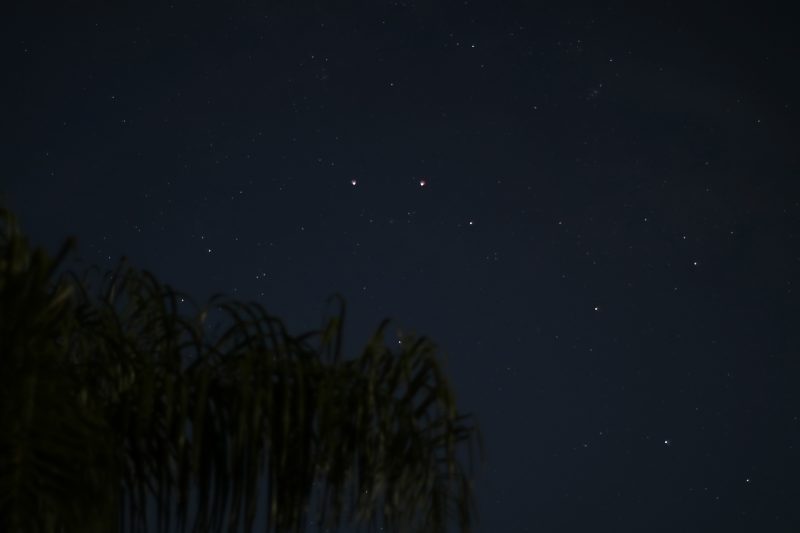
Victor C. Rogus in Arcadia, Florida caught Saturn (left) and Mars before dawn on the morning of March 30, 2018. He wrote they … “were glowing just 2° apart, above the Sagittarius Teapot. A beautiful conjunction of the angry Red Planet, Mars and the ringed wonder, Saturn, as the sun rose.” Cannon 80d camera with 50mm Carl Zeiss manual focus lens at f1,4 camera on tripod.


Saturn and Mars on the day of their conjunction – April 2, 2018 – via Steven A. Sweet in Toronto. Visit Steven’s Facebook page, Lunar101-MoonBook.

Saturn (left) and Mars are the 2 bright objects in this photo by Annie Lewis, taken April 2, 2018 – the morning of their conjunction – near Madrid, Spain. Saturn and Mars will remain in the same binocular field all week.

Victor C. Rogus in Arcadia, Florida also caught the planets on the morning of April 2, 2018. At conjunction, they were just 1.3 degrees apart, about a finger’s width held at arm’s length.

Mark your calendar for the morning of April 7, 2018, when the waning moon will sweep past Mars and Saturn. From North America, you have a good chance of viewing all 3 worlds – the moon, Mars and Saturn – in a single binocular field. Read more.

Saturn and Mars above the Teapot on March 30, 2018, via Patricio Leon in Santiago, Chile. He wrote on March 30: “The planets are gathering towards their close encounter on Monday.”

Planets Saturn (left) and Mars over 3 different days in March 2018, as seen by Shobhit Tiwari in Kanpur, India. He wrote on March 30: “Getting closer day by day … “

Victor C. Rogus in Arcadia, Florida caught Saturn (left) and Mars before dawn on the morning of March 30, 2018. He wrote they … “were glowing just 2° apart, above the Sagittarius Teapot. A beautiful conjunction of the angry Red Planet, Mars and the ringed wonder, Saturn, as the sun rose.” Cannon 80d camera with 50mm Carl Zeiss manual focus lens at f1,4 camera on tripod.
Joseph Robertson is Global Strategy Director for Citizens’ Climate Lobby, Founder and President of the Geoversiv Foundation, and lead strategist in the Resilience Intel initiative.
Democracy is not a zero-sum game. Behaving as if it is degrades democratic process and our personal political sovereignty.
A zero-sum game is a contest for control of finite resources. Whatever one gains, another must lose. When two or more candidates compete for a single public office, only one can win, so many people view politics as bloodsport, applying “winner takes all” thinking to everything political. But elected officials are not conquerors; they are sworn servants to all their constituents.
The beating heart of a free society is the guarantee of personal political sovereignty, safeguarded by transparent institutions, checks and balances, and a free press.
Political sovereignty is informational sovereignty. Disinformation disempowers. Distortion of our informational environment has slowed humanity’s overall effort to eliminate corruption and transcend harmful practices, like those that destabilize Earth’s climate.

Snapshot of the ‘Peace Synapse’ relational synaptic graph of climate, peace and security knowledge relationships, spanning the period 2009-2016. Photograph: Geoversiv Foundation, using the GDELT global knowledge graphing system.
What corrosive hyper-partisanship misses is that human intelligence, creative collaboration, and adherence to basic principles of fairness, make more good possible and so result in real value added — throughout the system, for the benefit of everyone.
Success requires dealing ably with complexity.
Neurons in the human brain organize themselves into vast 7-dimensional sandcastle structures — flashes of consciousness that emerge and disappear in millionths of a second. Brains are organic synaptic networks. More connections mean more possibilities – more “going on.” Bigger, more complex constellations of neural-attentive cohesion are effectively a bigger landscape for thoughtful attention, recall and imagination — an expanded, diversified space for figuring out what needs figuring.
Zero-sum thinking strips intelligence from our politics. Generative thinking recognizes that complex constructive interactions make us smarter, more capable, freer, and more secure.
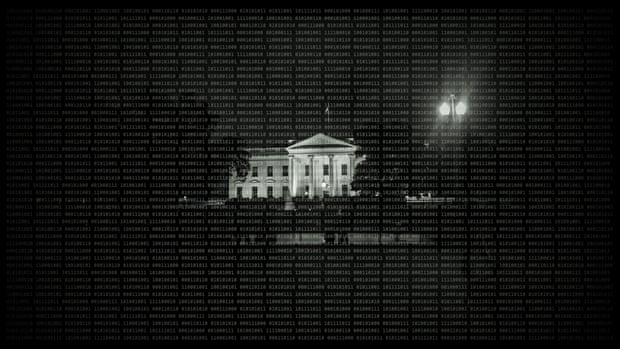
The unauthorized use of 50 million Facebook users’ data to corrupt the informational environment touching 57 billion “friend pairs” to induce a desired voting response appears to have been a deliberate effort to degrade the personal informational sovereignty of American voters. Illustration: Joseph Robertson
At the human scale, we naturally demand trustworthy generative value-building be an organic part of our experience. If we are informationally sovereign, we can scale up smart decision-making to correct hidden market failures and expand routine access to increased value for everyone.
To distort and disrupt climate and energy decision-making, carbon pollutersspent hundreds of millions of dollars over several decades. Their aim was to degrade the sovereignty of voters, consumers, rivals in the innovation space, the free press, and even nation states.
Such corrosive behaviors have undermined the competitiveness of polluting industries, making outdated methods appear longer lived than they stand a real chance of being, even as they build up unprecedented, nonlinear carbon liability. Market forces will eventually stop rewarding ever more costly carbon-intensive practices that put irreplaceable natural life-supports at risk.
Joseph Robertson is Global Strategy Director for Citizens’ Climate Lobby, Founder and President of the Geoversiv Foundation, and lead strategist in the Resilience Intel initiative.
Democracy is not a zero-sum game. Behaving as if it is degrades democratic process and our personal political sovereignty.
A zero-sum game is a contest for control of finite resources. Whatever one gains, another must lose. When two or more candidates compete for a single public office, only one can win, so many people view politics as bloodsport, applying “winner takes all” thinking to everything political. But elected officials are not conquerors; they are sworn servants to all their constituents.
The beating heart of a free society is the guarantee of personal political sovereignty, safeguarded by transparent institutions, checks and balances, and a free press.
Political sovereignty is informational sovereignty. Disinformation disempowers. Distortion of our informational environment has slowed humanity’s overall effort to eliminate corruption and transcend harmful practices, like those that destabilize Earth’s climate.

Snapshot of the ‘Peace Synapse’ relational synaptic graph of climate, peace and security knowledge relationships, spanning the period 2009-2016. Photograph: Geoversiv Foundation, using the GDELT global knowledge graphing system.
What corrosive hyper-partisanship misses is that human intelligence, creative collaboration, and adherence to basic principles of fairness, make more good possible and so result in real value added — throughout the system, for the benefit of everyone.
Success requires dealing ably with complexity.
Neurons in the human brain organize themselves into vast 7-dimensional sandcastle structures — flashes of consciousness that emerge and disappear in millionths of a second. Brains are organic synaptic networks. More connections mean more possibilities – more “going on.” Bigger, more complex constellations of neural-attentive cohesion are effectively a bigger landscape for thoughtful attention, recall and imagination — an expanded, diversified space for figuring out what needs figuring.
Zero-sum thinking strips intelligence from our politics. Generative thinking recognizes that complex constructive interactions make us smarter, more capable, freer, and more secure.

The unauthorized use of 50 million Facebook users’ data to corrupt the informational environment touching 57 billion “friend pairs” to induce a desired voting response appears to have been a deliberate effort to degrade the personal informational sovereignty of American voters. Illustration: Joseph Robertson
At the human scale, we naturally demand trustworthy generative value-building be an organic part of our experience. If we are informationally sovereign, we can scale up smart decision-making to correct hidden market failures and expand routine access to increased value for everyone.
To distort and disrupt climate and energy decision-making, carbon pollutersspent hundreds of millions of dollars over several decades. Their aim was to degrade the sovereignty of voters, consumers, rivals in the innovation space, the free press, and even nation states.
Such corrosive behaviors have undermined the competitiveness of polluting industries, making outdated methods appear longer lived than they stand a real chance of being, even as they build up unprecedented, nonlinear carbon liability. Market forces will eventually stop rewarding ever more costly carbon-intensive practices that put irreplaceable natural life-supports at risk.
Editor’s note: ESA’s Space Debris team have sent in a final update on the reentry of Tiangong-1.
As we posted earlier, around once a year, ESA takes part in a joint tracking campaign run by the Inter Agency Space Debris Coordination Committee (IADC), which consists of experts from 13 space organisations such as NASA, Roscosmos, CNSA and European and other national agencies.
With the agreement of all members, Tiangong-1’s reentry was the mission selected for this year’s campaign.
During the now-completed campaign, participants pooled their predictions of the time window, as well as their respective tracking datasets obtained from radar and other sources, with the aim of cross-verifying, cross-analysing and improving the prediction accuracy for all members.
ESA has been acting as host and administrator for the campaign, as it has done for the about twenty previous IADC test campaigns since 1998.
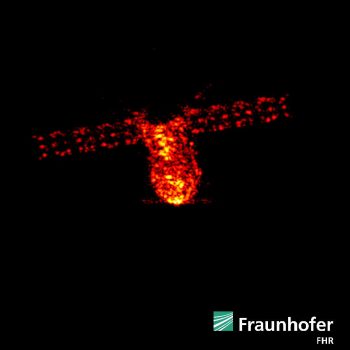
Tiangong-1 seen at an altitude of about 161 km by the powerful TIRA research radar operated by the Fraunhofer Institute for High Frequency Physics and Radar Techniques (FHR) near Bonn, Germany. Image acquired on the morning of 1 April 2018, during one of the craft’s final orbits. Credit: Fraunhofer FHR
Besides the IADC campaign, ESA also had an operational role: Throughout the past days it supplied its own predictions to national alert and civil protection centres of Member States.
Confirmation of this morning’s Tinagong-1 reentry was published by the US military, who issued a press release today at around 04:00 CEST.
They stated that reentry had occurred over the southern Pacific Ocean at approximately 5:16 p.m. (PST), which was 02:16 CEST – this was well within ESA’s earlier reentry forecast window, which ran from 23:00 UTC on 1 April to 03:00 UTC on 2 April (01:00 CEST to 05:00 CEST on 2 April).
“According to our experience, their assessment is very reliable,” says Holger Krag, Head of ESA’s Space Debris Office.
“This corresponds to a geographic latitude of 13.6 degrees South and 164.3 degrees West – near American Samoa in the Pacific, near the international date Line.
“Both time and location are well within ESA’s last prediction window.”
Holger notes that, afterwards, at 04:05 UTC (06:05 CEST), had Tiangong-1 still been in orbit, it would have become visible to the Fraunhofer FHR institute’s TIRA radar, located near Bonn. In fact, the team working at TIRA reported that the spacecraft was no longer visible, giving additional confirmation that it had reentered.
Indeed, data supplied by many a number of ESA partners were crucial to enable the space debris team to conduct their work. “We’d certainly like to thank all our partners who supported ESA throughout this campaign,” says Holger.
China’s CMSA manned space agency also made a public statement.
It’s interesting to note, from a European perspective, how limited our capabilities still are after all. Most of the data on space objects that ESA receives today comes from non-European sources.

Commands for a debris avoidance manoeuvre being sent to ESA’s Swarm-B on 25 January 2017. Credit: ESA
“This illustrates again the dependence that Europe has on non-European sources of information to properly and accurately manage space traffic, detect reentries such as Tiangong-1 and track space debris that remains in orbit – which routinely threatens ESA, European and other national civil, meteorological, scientific, telecomm and navigation satellites,” says Holger.
The US military routinely warns ESA when one of the Agency’s satellites may be at risk for collision with a piece of space debris, an event that is happening with increasing frequency (see Anatomy of a debris incident).
Holger points out that Europe also lacks the means to independently confirm reentries the size of Tiangong-1, which occur almost weekly, by using, for example, an infrared tracking payload mounted on a geostationary satellite.
He also mentions that, three days ago, solar-generated space weather gave us a surprise, when the Sun’s activity spontaneously dropped.
“This delayed the Tiangong-1 reentry by about half a day, and the orbit predictions initially assuming higher space-weather activity had to be recalculated.”
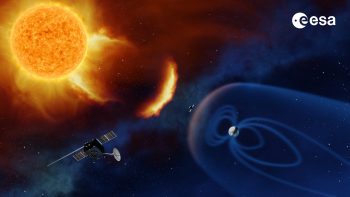
Concept for ESA’s future space weather monitoring mission at the Sun. Credit: ESA/A. Baker, CC BY-SA 3.0 IGO
Earlier this year, ESA in cooperation with European industry began a multi-year study to examine a new mission (see “Where no mission has gone before“) that would continuously observe our Sun and provide crucial data that will help us improve our forecasts of solar activity and its effects on spacecraft, satellites in orbit and critical infrastructure on ground such as power grids and oil pipelines.
Since 2009, ESA has been developing software, technologies and precursor systems to test a fully European network of radars, telescopes and other detectors that would provide independent data on the risks from spaceflight.
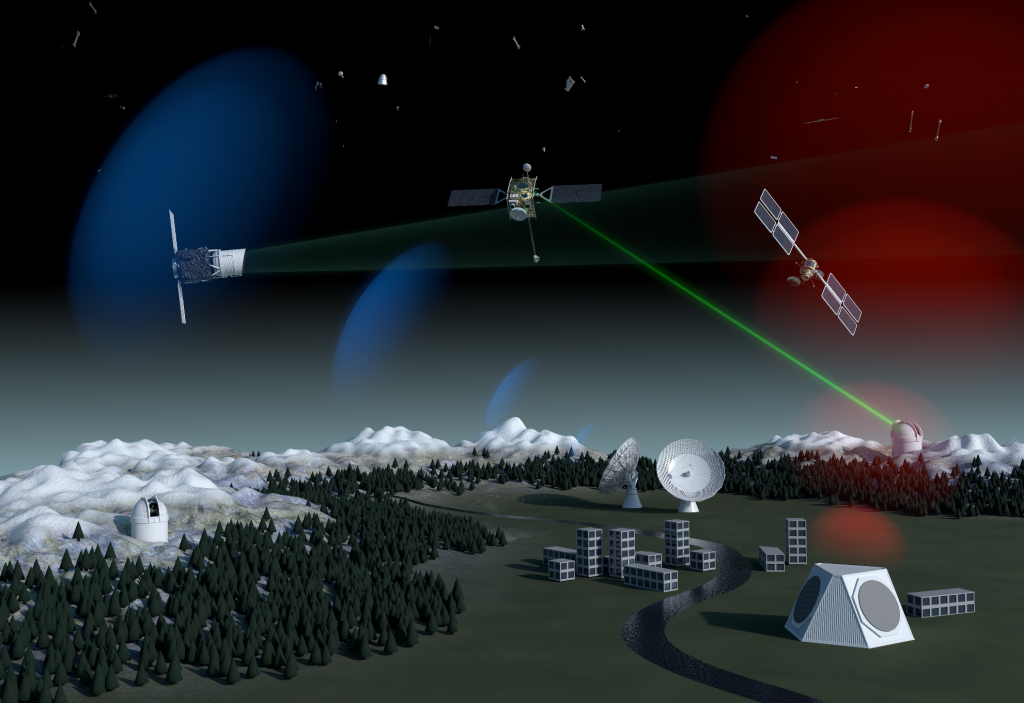
Concept for ESA’s future space debris surveillance system employing ground-based optical, radar and laser technology as well as in-orbit survey instruments. Credit: ESA/Alan Baker, CC BY-SA 3.0 IGO
“Today, everyone in Europe relies on the US military for space debris orbit data – we lack the radar network and other detectors needed to perform independent tracking and monitoring of objects in space,” says Holger.
“This is needed to allow meaningful European participation in the global efforts for space safety.”
Editor’s note: ESA’s Space Debris team have sent in a final update on the reentry of Tiangong-1.
As we posted earlier, around once a year, ESA takes part in a joint tracking campaign run by the Inter Agency Space Debris Coordination Committee (IADC), which consists of experts from 13 space organisations such as NASA, Roscosmos, CNSA and European and other national agencies.
With the agreement of all members, Tiangong-1’s reentry was the mission selected for this year’s campaign.
During the now-completed campaign, participants pooled their predictions of the time window, as well as their respective tracking datasets obtained from radar and other sources, with the aim of cross-verifying, cross-analysing and improving the prediction accuracy for all members.
ESA has been acting as host and administrator for the campaign, as it has done for the about twenty previous IADC test campaigns since 1998.

Tiangong-1 seen at an altitude of about 161 km by the powerful TIRA research radar operated by the Fraunhofer Institute for High Frequency Physics and Radar Techniques (FHR) near Bonn, Germany. Image acquired on the morning of 1 April 2018, during one of the craft’s final orbits. Credit: Fraunhofer FHR
Besides the IADC campaign, ESA also had an operational role: Throughout the past days it supplied its own predictions to national alert and civil protection centres of Member States.
Confirmation of this morning’s Tinagong-1 reentry was published by the US military, who issued a press release today at around 04:00 CEST.
They stated that reentry had occurred over the southern Pacific Ocean at approximately 5:16 p.m. (PST), which was 02:16 CEST – this was well within ESA’s earlier reentry forecast window, which ran from 23:00 UTC on 1 April to 03:00 UTC on 2 April (01:00 CEST to 05:00 CEST on 2 April).
“According to our experience, their assessment is very reliable,” says Holger Krag, Head of ESA’s Space Debris Office.
“This corresponds to a geographic latitude of 13.6 degrees South and 164.3 degrees West – near American Samoa in the Pacific, near the international date Line.
“Both time and location are well within ESA’s last prediction window.”
Holger notes that, afterwards, at 04:05 UTC (06:05 CEST), had Tiangong-1 still been in orbit, it would have become visible to the Fraunhofer FHR institute’s TIRA radar, located near Bonn. In fact, the team working at TIRA reported that the spacecraft was no longer visible, giving additional confirmation that it had reentered.
Indeed, data supplied by many a number of ESA partners were crucial to enable the space debris team to conduct their work. “We’d certainly like to thank all our partners who supported ESA throughout this campaign,” says Holger.
China’s CMSA manned space agency also made a public statement.
It’s interesting to note, from a European perspective, how limited our capabilities still are after all. Most of the data on space objects that ESA receives today comes from non-European sources.

Commands for a debris avoidance manoeuvre being sent to ESA’s Swarm-B on 25 January 2017. Credit: ESA
“This illustrates again the dependence that Europe has on non-European sources of information to properly and accurately manage space traffic, detect reentries such as Tiangong-1 and track space debris that remains in orbit – which routinely threatens ESA, European and other national civil, meteorological, scientific, telecomm and navigation satellites,” says Holger.
The US military routinely warns ESA when one of the Agency’s satellites may be at risk for collision with a piece of space debris, an event that is happening with increasing frequency (see Anatomy of a debris incident).
Holger points out that Europe also lacks the means to independently confirm reentries the size of Tiangong-1, which occur almost weekly, by using, for example, an infrared tracking payload mounted on a geostationary satellite.
He also mentions that, three days ago, solar-generated space weather gave us a surprise, when the Sun’s activity spontaneously dropped.
“This delayed the Tiangong-1 reentry by about half a day, and the orbit predictions initially assuming higher space-weather activity had to be recalculated.”

Concept for ESA’s future space weather monitoring mission at the Sun. Credit: ESA/A. Baker, CC BY-SA 3.0 IGO
Earlier this year, ESA in cooperation with European industry began a multi-year study to examine a new mission (see “Where no mission has gone before“) that would continuously observe our Sun and provide crucial data that will help us improve our forecasts of solar activity and its effects on spacecraft, satellites in orbit and critical infrastructure on ground such as power grids and oil pipelines.
Since 2009, ESA has been developing software, technologies and precursor systems to test a fully European network of radars, telescopes and other detectors that would provide independent data on the risks from spaceflight.

Concept for ESA’s future space debris surveillance system employing ground-based optical, radar and laser technology as well as in-orbit survey instruments. Credit: ESA/Alan Baker, CC BY-SA 3.0 IGO
“Today, everyone in Europe relies on the US military for space debris orbit data – we lack the radar network and other detectors needed to perform independent tracking and monitoring of objects in space,” says Holger.
“This is needed to allow meaningful European participation in the global efforts for space safety.”

Tonight and tomorrow night – April 2 and 3, 2018 – watch for two very bright objects near each other late at night and before dawn breaks. They are the waning gibbous moon and king planet Jupiter. Two other planets – Mars and Saturn – are also nearby.
On April 2 and 3, as seen from the northern part of Earth’s globe, the moon and Jupiter climb above your southeast horizon in late evening. From the southern part of the globe, the moon and Jupiter are up by mid-evening (around 9 p.m. local time). From the entire globe, after they rise, the moon and Jupiter are up for the remainder of the night.
Meanwhile, Mars and Saturn come up closer to the time of dawn. They’re not as bright as the moon and Jupiter, but they’ll be nearby. Their conjunction is the morning of April 2, when they’re separated by only about 1.3 degrees, about the width of your finger held at arm’s length. Every morning this week, Mars and Saturn will be close enough to fit into a single binocular field of view. By the morning of April 7, the moon will join up with Mars and Saturn. As seen from North America, the moon, Mars and Saturn should fit – or nearly fit – into a single binocular field of view.
Click here for recommended sky almanacs; they can give you the rising times of the sun, moon and planets in your sky.

Mars and Saturn are in conjunction on April 2, 2018. They’re in the morning sky, exceedingly noticeable for being bright and close together on our sky’s dome. To distinguish Mars from Saturn, look for red Mars to be a touch brighter than golden-colored Saturn. Read more.

The moon never stops moving in orbit around Earth and so – every morning this week – you’ll see the moon in a slightly different position with respect to Jupiter, Mars and Saturn. Here is the moon’s position with respect to Jupiter before dawn on April 3, 4, and 5, 2018, as seen from North America.

From North America, you have a good chance of viewing 3 worlds – the moon, Mars and Saturn – in a single binocular field on April 7.
Jupiter, the brightest starlike object in the morning sky, easily outshines Mars or Saturn. Even so, Mars and Saturn are still respectably bright, shining as brilliantly as 1st-magnitude stars, that is, the brightest stars in our sky.
By the way, Jupiter is not the sky’s brightest planet. That honor belongs to Venus, which shines much more brilliantly than Jupiter ever does. In early April 2018, Venus is low in your western sky just after sunset and soon follows the sun beneath the western horizon.
Day by day throughout April, Venus will set later after sunset, while – day by day – Jupiter will rise earlier.
By mid-April, Venus will be setting as Jupiter is rising (given a level horizon). Toward the month’s end, look for Venus and Jupiter to appear opposite one another for a brief while at dusk or nightfall.

In early April 2018, brilliant Venus – the sky’s brightest planet – is low in your western sky in evening twilight. Look soon after sunset, for Venus soon follows the sun beneath the western horizon.
Bottom line: The moon and brilliant Jupiter are close on April 2 and 3, 2018. Bright Mars and Saturn are nearby.

Tonight and tomorrow night – April 2 and 3, 2018 – watch for two very bright objects near each other late at night and before dawn breaks. They are the waning gibbous moon and king planet Jupiter. Two other planets – Mars and Saturn – are also nearby.
On April 2 and 3, as seen from the northern part of Earth’s globe, the moon and Jupiter climb above your southeast horizon in late evening. From the southern part of the globe, the moon and Jupiter are up by mid-evening (around 9 p.m. local time). From the entire globe, after they rise, the moon and Jupiter are up for the remainder of the night.
Meanwhile, Mars and Saturn come up closer to the time of dawn. They’re not as bright as the moon and Jupiter, but they’ll be nearby. Their conjunction is the morning of April 2, when they’re separated by only about 1.3 degrees, about the width of your finger held at arm’s length. Every morning this week, Mars and Saturn will be close enough to fit into a single binocular field of view. By the morning of April 7, the moon will join up with Mars and Saturn. As seen from North America, the moon, Mars and Saturn should fit – or nearly fit – into a single binocular field of view.
Click here for recommended sky almanacs; they can give you the rising times of the sun, moon and planets in your sky.

Mars and Saturn are in conjunction on April 2, 2018. They’re in the morning sky, exceedingly noticeable for being bright and close together on our sky’s dome. To distinguish Mars from Saturn, look for red Mars to be a touch brighter than golden-colored Saturn. Read more.

The moon never stops moving in orbit around Earth and so – every morning this week – you’ll see the moon in a slightly different position with respect to Jupiter, Mars and Saturn. Here is the moon’s position with respect to Jupiter before dawn on April 3, 4, and 5, 2018, as seen from North America.

From North America, you have a good chance of viewing 3 worlds – the moon, Mars and Saturn – in a single binocular field on April 7.
Jupiter, the brightest starlike object in the morning sky, easily outshines Mars or Saturn. Even so, Mars and Saturn are still respectably bright, shining as brilliantly as 1st-magnitude stars, that is, the brightest stars in our sky.
By the way, Jupiter is not the sky’s brightest planet. That honor belongs to Venus, which shines much more brilliantly than Jupiter ever does. In early April 2018, Venus is low in your western sky just after sunset and soon follows the sun beneath the western horizon.
Day by day throughout April, Venus will set later after sunset, while – day by day – Jupiter will rise earlier.
By mid-April, Venus will be setting as Jupiter is rising (given a level horizon). Toward the month’s end, look for Venus and Jupiter to appear opposite one another for a brief while at dusk or nightfall.

In early April 2018, brilliant Venus – the sky’s brightest planet – is low in your western sky in evening twilight. Look soon after sunset, for Venus soon follows the sun beneath the western horizon.
Bottom line: The moon and brilliant Jupiter are close on April 2 and 3, 2018. Bright Mars and Saturn are nearby.